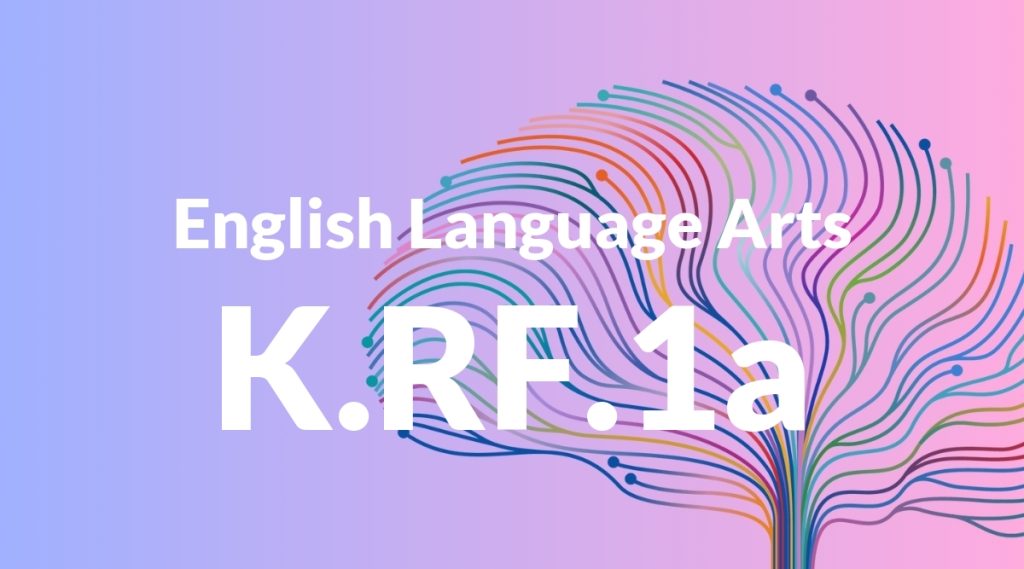Standard: K.RF.1 – Demonstrate understanding of the organization and basic features of print.
Grade level: Kindergarten
Subject: English Language Arts
Domain: Reading: Foundational Skills
Teacher Overview
This standard emphasizes the importance of students understanding the basic features of print, such as recognizing that print carries meaning, distinguishing between letters and words, and following text from left to right and top to bottom. Mastering this foundational skill is crucial as it sets the stage for future reading success. Students should be familiar with books and printed materials, recognizing that print carries meaning and distinguishing between pictures and text.
After mastering this standard, students will be able to recognize and name all upper- and lowercase letters of the alphabet, understand the concept of words, and begin to decode simple words.
Common Misconception 1
Some students may think that words are just random marks on the page. This misconception can hinder their ability to understand that print carries meaning and is composed of letters and words.
Intervention 1
Use books with clear, large print and guide students to point to each word as you read aloud. This helps them connect spoken words to written words.
Common Misconception 2
Students might not understand that text is read from left to right and top to bottom. This misunderstanding can lead to difficulties in following along with text and comprehending its structure.
Intervention 2
Model reading by using a finger to track the direction of the text while reading aloud. This visual aid helps students grasp the correct way to follow text.
Prerequisite Knowledge
Students should have basic familiarity with books and printed materials, including recognizing that print carries meaning and distinguishing between pictures and text.
Subsequent Knowledge
Students will develop skills in recognizing and naming all upper- and lowercase letters of the alphabet, understanding the concept of words, and beginning to decode simple words.
Instructional Activities
- Read aloud sessions with finger tracking
- Labeling parts of a book (cover, title, author)
- Interactive games focusing on word and letter recognition
- Using picture books to identify text direction
- Group activities where students point to words in a big book




